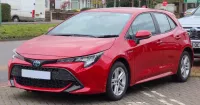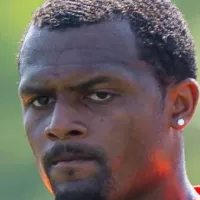A tank is an armored fighting vehicle designed for front-line ground combat, balancing firepower, armor, and mobility. It features tracks for movement and a powerful engine, often with a turret-mounted main armament. Tanks are crucial for modern ground forces and combined arms combat, remaining a primary offensive weapon in the 20th and 21st centuries.
1903: Levavasseur Proposes Mounting a Field Gun
In 1903, Captain Léon René Levavasseur of the French artillery suggested mounting a field gun in an armored box on tracks.
1903: The Land Ironclads Story
In 1903, H.G. Wells's short story "The Land Ironclads" featured armoured, internally powered vehicles capable of crossing trenches, foreshadowing the tactical use and impact of tanks.
1904: First Armoured Car Produced in Austria
In 1904, the first armoured car was produced in Austria, though its mobility was limited to rails or passable terrain.
1908: Scott Seeks Motor Traction for Antarctic Expedition
In 1908, Robert Falcon Scott advocated for motor traction for the South Pole expedition and tasked Reginald Skelton with developing caterpillar tracks for snow surfaces.
1911: Early Tank Designs Proposed
In 1911, Günther Burstyn presented plans for a light tank, and Lancelot de Mole submitted a design for a tracked armored vehicle to the British War Office.
1911: Tracked Motors in Scott's Antarctic Expedition
In 1911, Herbert Ponting documented Scott's Antarctic Terra Nova Expedition, showcasing tracked motors developed by the Wolseley Tool and Motor Car Company.
1912: Scott's Motors Inspire British Tanks
In 1912, Apsley Cherry-Garrard credited Scott's "motors" with inspiring the development of British World War I tanks.
1914: Early Tank Designs Rejected
By 1914, early tank designs were rejected and largely forgotten, with little consideration given to tanks by army leaders.
1914: British Army Persuaded to Create Armoured Vehicles
From late 1914, some British Army officers tried to persuade the War Office to consider the creation of armoured vehicles. The Royal Navy carried out early tank development due to the Armys reluctance.
February 1915: Landship Committee Formed
On February 20, 1915, Winston Churchill formed the Landship Committee to develop armored vehicles, headed by Eustace Tennyson d'Eyncourt.
July 1915: Commission Placed to Design Trench-Crossing Machine
On July 22, 1915, a commission was established to develop a machine capable of traversing a 4-foot wide trench.
September 1915: Little Willie Runs for the First Time
In September 1915, the initial tank design, named Little Willie, underwent its first trial run, contributing to the evolution of track design.
1915: Tank Terminology Origins
In 1915, the term "tank" was initially employed in a military context by the British to discreetly refer to their "landships" before their operational deployment.
January 1916: Prototype Mother Adopted
In January 1916, the "Mother" prototype was selected as the design template for future tanks.
February 1916: First Tank Order Placed
In February 1916, the initial order for tanks was issued, marking a significant milestone in tank production.
September 1916: First Tank Action at the Somme
In September 1916, during the Battle of the Somme, the inaugural tank action took place, employing "Male" tanks armed with naval cannon and machine guns, alongside "Female" tanks equipped solely with machine guns.
1916: H.G. Wells Views British Tanks
In 1916, after observing British tanks, H.G. Wells acknowledged that he was not the originator of the tank concept, despite his prior literary explorations of similar vehicles.
April 1918: First Tank vs Tank Action
On 24 April 1918, the first tank versus tank action occurred at the Second Battle of Villers-Bretonneux, France, when three British Mark IV tanks encountered three German A7V tanks.
1934: Japan transitions to diesel engines
In 1934, Japan was the first to begin transitioning to diesel engines starting with the Type 89B.
1937: French Tank Doctrine Focus
In 1937, French doctrine focused on firepower and protection over mobility for tanks, emphasizing their close integration with infantry.
1937: Battle of Guadalajara
In 1937, during the Spanish Civil War, Republican troops, equipped with Soviet-supplied tanks and supported by aircraft, routed Italian troops fighting for the Nationalists in the seven-day Battle of Guadalajara. Most tanks deployed were either World War I vintage Renault FT tanks or Soviet tanks with 45mm guns.
August 1939: Zhukov's Combined Force at Nomonhan
In August 1939, Soviet General Georgy Zhukov utilized a combined force of tanks and airpower at Nomonhan against the Japanese 6th Army.
August 1939: Soviet Union Launches First Mass Tank/Air Attack
In August 1939, the Soviet Union initiated the first mass tank/air attack at Khalkhin Gol, marking a pivotal moment in armored warfare.
1939: Khalkhin Gol Conflict Lessons
In 1939, the five-month-long war between the Soviet Union and the Japanese 6th Army at Khalkhin Gol (Nomonhan) highlighted the differences between diesel and petrol engines in tanks. The Soviets learned from their defeat of the Japanese 6th Army with massed combined tank and air attack and incorporated these experiences into their new T-34 medium tank during World War II.
May 1940: German Blitzkrieg Success
In May 1940, Germany successfully employed blitzkrieg tactics, largely due to their superior tactics and French blunders, rather than superior weaponry.
1940: German Successes Against the Soviets
In 1940, during the initial stages of Operation Barbarossa, the Axis powers, with Germany at the lead, saw initial successes against the Soviets due to surprise attacks, mechanical problems, poor training, and incompetent leadership, leading to the destruction of many Soviet machines.
December 1941: US Enters World War II
In December 1941, as the United States entered World War II, its mass production capacity enabled the rapid construction of thousands of M4 Sherman medium tanks. Despite not being a match for the Panther or Tiger in tank-versus-tank battles, around 42,000 Shermans were built and delivered to Allied nations during the war.
1942: Second Battle of El Alamein
In 1942, during the Second Battle of El Alamein, the Afrika Korps, facing supply line disruptions, had 95% of its tanks destroyed and was forced to retreat by a massively reinforced British Eighth Army.
1942: Germany Develops Tiger Tank
In 1942, facing challenges from Soviet tank designs, the Germans were forced to up-gun their Panzer IVs and design and build the larger and more expensive Tiger heavy tank.
1943: Porsche's Elefant Tank Destroyer
In 1943, Porsche's Elefant German tank destroyer used a primitive, gasoline-engined form of diesel-electric series hybrid drives.
May 1945: T-34 Production Numbers
By May 1945, the T-34 became the most produced tank of World War II, with approximately 65,000 units manufactured.
1946: Centurion in Service
From 1946, the British Centurion tank entered service and would go on to form the bulk of NATO armored forces.
1951: US M48 in Service
From 1951, the US M48 Patton tank entered service and would go on to form the bulk of NATO armored forces.
1971: Indo-Pakistani War
In 1971, tanks and anti-tank weapons of the Cold War era saw action in the Indo-Pakistani War.
2022: Effectiveness of Anti-Tank Weapons
In 2022, anti-tank weapons demonstrated the ability to destroy older generations of tanks, even with single shots.
Mentioned in this timeline
The Union of Soviet Socialist Republics USSR existed from to...
Germany officially the Federal Republic of Germany is a Western...
Japan is an East Asian island country situated in the...
Iraq officially the Republic of Iraq is a West Asian...
France officially the French Republic is primarily located in Western...

A car also known as an automobile is a wheeled...
Trending

Tim Walz is an American politician educator and Army National Guard veteran currently serving as the st Governor of Minnesota...
2 months ago Blinkova and Salkova to face off at the 2025 Jiangxi Open.

2 months ago Alcaraz Rallies to Victory Against Fritz, Closing in on No. 1 Ranking

3 months ago Emma Navarro vs. Shuai Zhang: WTA Wuhan Open 2025 Match Prediction and Preview

2 months ago Deandre Ayton's Impact: Lakers' Undefeated Streak and His Drive After OKC Loss.

1 month ago Deshaun Watson Returns to Browns Practice After Achilles Injury: 21-Day Window Opens
Popular

Stranger Things created by the Duffer Brothers is a popular...

XXXTentacion born Jahseh Dwayne Ricardo Onfroy was a controversial yet...

Kelsey Grammer is an accomplished American actor producer and singer...

Candace Owens is an American conservative political commentator and author...

Bernie Sanders is a prominent American politician currently serving as...

Melania Trump a Slovenian-American former model has served as First...
